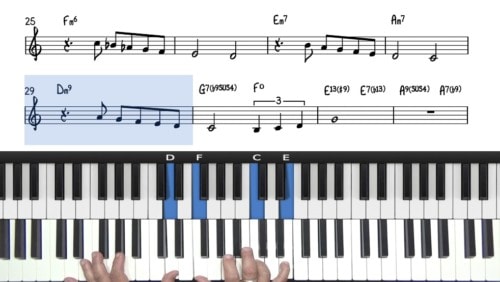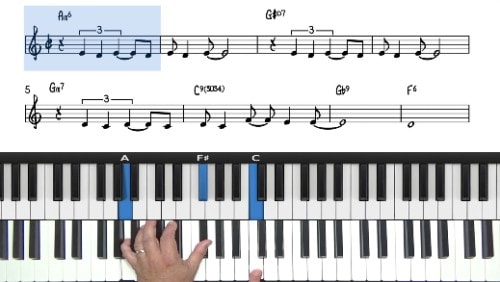No-Linear Rhythmic Patterns
In this 5 Minute Masterclass, we will discuss the concept of ‘non-linear rhythmic patterns’.
Rhythm is most often explained as durations between the notes. A nice analogy here would be morse code and the alternating durations. There is nothing wrong with this approach to rhythm, but this is just one approach or view – perhaps the ‘flattest’ and most linear approach.
The Concept Of Nested Rhythms
An interesting way to think of rhythm is a ‘nested-approach’ where instead of a linear line of duration, we can think of them as concentric circles. Using the analogy of the bicycle, the gears on the bicycle are non-linear; we can pump our feet at the same rate but the different gears of the bicycle allow the wheels of the bicycle to have less tension on the uphill, and more tension on the downhill.
Application To A Samba Groove
We will demonstrate the concept of nested rhythms with a samba composed by Hermento Pasqual.
Instead of playing everything as a single linear rhythmic pattern, we will demonstrate of combination of subdivisions of quarter note. Moving back to our analogy of the bicycle, the quarter note and the 16th note can be viewed as the different gears of the gear system.
Syncopation & The 16th Notes Matrix
If we view the samba rhythm as a ’16 note grid’ it opens us a multi-dimensional, non-linear approach when our rhythmic placement can fall anywhere within the grid.
If we view our quarter note as notes that are ‘facing down’ we can then utilise the 16th note to achieve a wide variety of syncopated rhythmic possibilities. The 16th note can fall before the quarter note, after the quarter note, and sometimes they join together.
Practice Tips
-
Visualising these different ‘gears’ will allow you to step out of repetitive linear patterns.
-
This lesson demonstrated in context of the accompanist, and you will hear that it makes the chords ‘sing and dance’.
-
Experiment with this concept in a melodic context as well as from an accompaniment standpoint,
- Apply this concept to different styles of music. In this lesson we used the samba rhythm as the vehicle to explore the rhythm possibilities.






